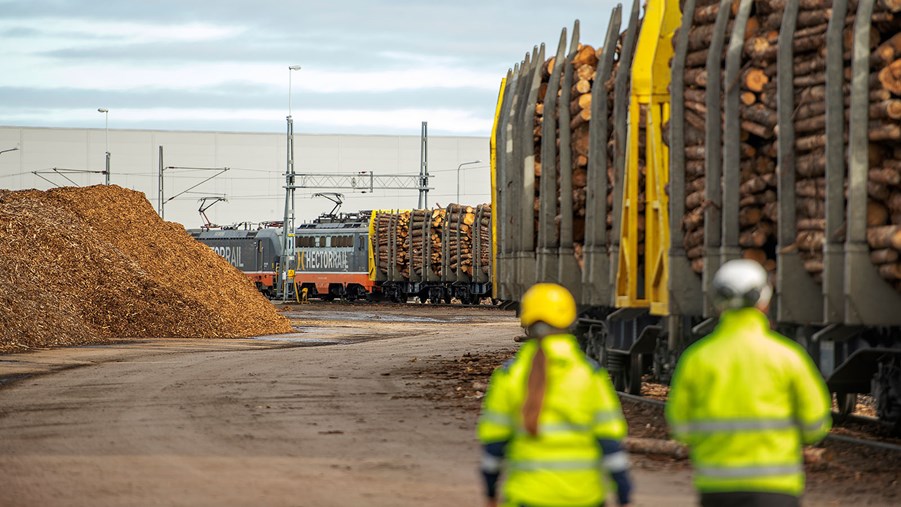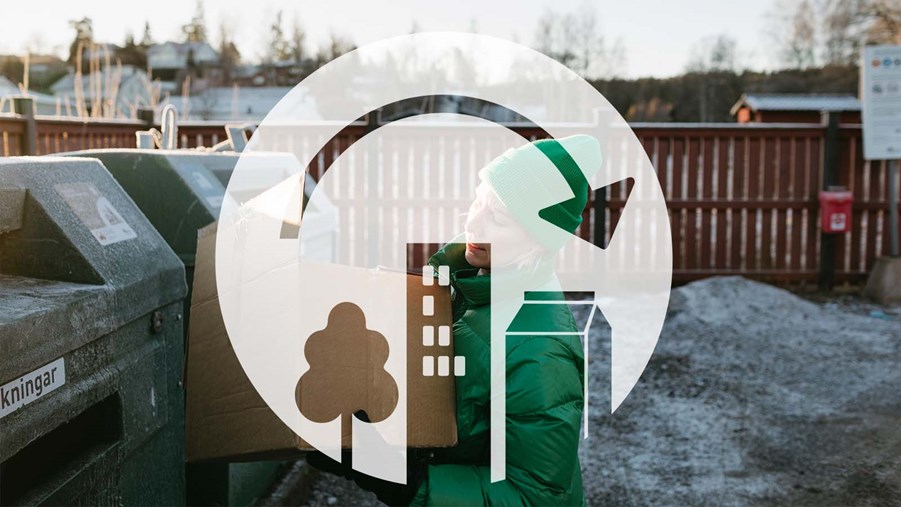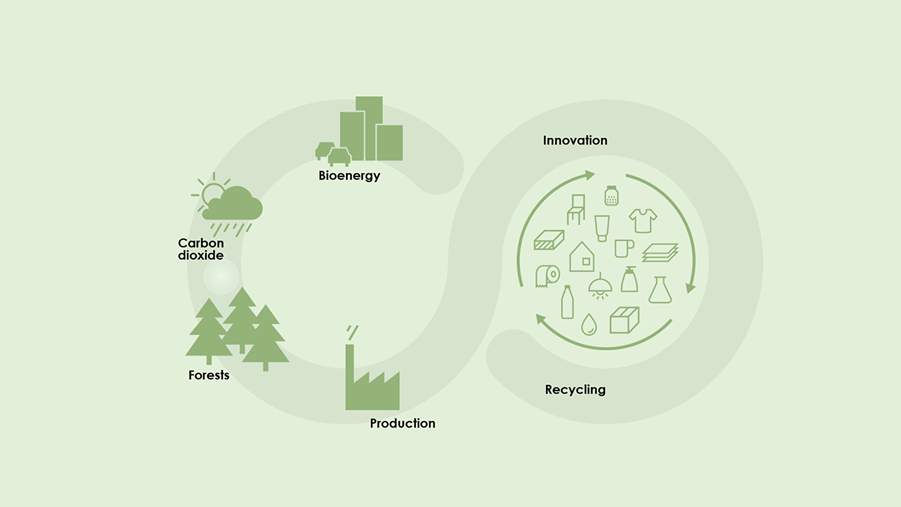
Wood-based products and solutions embody regenerative principles in the transition to a circular bioeconomy. This is accomplished by harnessing renewable resources in place of fossil-based materials, designing for recyclability from the outset, actively seeking opportunities for increased material reuse, and increasing material collection and recycling.
In these ways, wood products contribute to a regenerative, resource-restoring approach to the circular bioeconomy.
In this context, it is important to recognise that fresh and recycled fibres are complementary and part of a single European fibre-supply system. Both are sustainable and needed to satisfy customer needs and desired product specifications. Fresh fibres are the dominating resource in forest-rich Member States, while recycled fibres dominate in more densely populated areas. A continuous input of fresh fibres is needed to maintain this cycle. Mandatory recycled content initiatives should only be applied at a systems level, rather than to product groups or individual products.
Steps towards this goal include striving to steadily increase proportion of:
- Fossil-free products
- Fossil-free transports
- Reusable wood products
- Recyclable products
To achieve this, a supportive policy framework is needed that seeks to:
- Recognise contributions from wood, fibre-based, paper-based and other bio-based products to the Union’s circular bioeconomy.
- Promote renewability, i.e., biobased content, in parallel with recycled content in product-related legislation.
- Apply the cascading principle in line with market and regional specificities, without limiting the development of new wood-based products.
- Acknowledge that renewable single use products (with high collection and recycling rates) and reuse are complementary solutions.
- Establish appropriate and cost-effective collection and sorting systems to encourage recycling at scale.
- Ensure that more waste and industrial side streams can be used as secondary raw materials.
- Encourage consumers to contribute to increased circularity.






